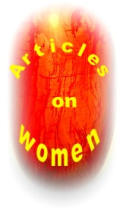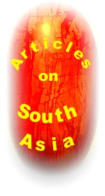The herpes epidemic: forgotten but not gone Health:
Sexually transmitted disease, overshadowed by AIDS






‘Knowledge is power’





WEB PAGES
OUR OFFERING
UPLOADED ITEMS
OUR EMAIL
kri200@womenspowerbook.org
QUESTION
Raise the vol to listen to the
lady airing awe @ the SINGLE author encyclopedia
World’s
encyclopedic
knowledge
compacted
in
your
hand
February 03, 1998|By Bob Condor | Bob Condor,CHICAGO TRIBUNE
More than 15 years ago, herpes was widely recognized as a "silent epidemic" in the major media.
Then AIDS hit, and everyone seemed to forget about herpes.
But the herpes simplex virus, Type 2, which is more commonly known as genital herpes, didn't just
go away. Incidence of the sexually transmitted disease is up 30 percent since the late 1970s,
according to recent data from the federal Centers for Disease Control and Prevention. One in five
Americans age 12 and older carries the virus.
The Type 2 herpes virus differs from the more common Type 1 variety, which invades the body of
roughly 95 percent of all Americans by age 5. The most common symptoms of Type 1 are cold
sores on the lips and mouth.
"We teach medical students that Type 1 is generally above the waist and Type 2 is below the
waist," said Dr. Virginia Sulica, chair of the dermatology department at George Washington
University Medical Center in Washington. "They are separate illnesses. Having Type 1 doesn't
predispose you to genital herpes."
In any case, you can expect to hear more about herpes in the next few months: Large
pharmaceutical firms, notably Glaxo Wellcome with its television commercials, have rolled out
national marketing campaigns for specific drug treatments. The CDC is also part of a renewed
interest in increasing public awareness.
Young people are targeted as the group at highest risk for Type 2. Research shows that nearly 70
percent of high school seniors and 40 percent of ninth-graders have had sex. Like most of the
500,000 Americans who contract herpes Type 2 each year, most of these adolescents don't know
they have it. The CDC reports that less than 10 percent of people who tested positive for Type 2
had been aware of the condition.
One problem is, a good number of people do not experience noticeable symptoms during an initial
exposure, though they frequently feel as if they have a mild case of flu and fever. The primary
evidence of genital herpes is a series of fever blisters or cold sores that can be uncomfortable and
even painful when they break into open sores that can last one to three weeks. Many people
mistake such outbreaks for a rash, ingrown hair, insect bites, jock itch or yeast infections.
Sulica said there is often no less clarity at the professional level. Herpes is a disease frequently
missed by doctors, she said, mostly because there often are no apparent lesions or sores. Plus,
physicians have no regular screening process available.
If an outbreak occurs, cultures of the area can be evaluated for the Type 2 virus. When there are
no symptoms, a blood test for specific antibodies of Type 1 and Type 2 is available, but only one
version -- at the University of Washington laboratory in Seattle -- can reliably distinguish between
the two.
The first outbreak of genital herpes usually occurs two weeks after infection. While the first year is
usually the most difficult in terms of recurrences -- four to five is typical -- some people suffer little
after the original episode. An unfortunate minority has regular and fairly severe outbreaks.
Women are more likely to develop a case of herpes Type 2. Statistics show it affects 25.6 percent
of U.S. females, compared with 17.8 percent of males. African-Americans also are documented to
be at higher risk than whites.
You might also like:
Being human we mess things up; specially planners & the builders
Amazing Hidden Insights into HINDUISM
African slavery and Islam



Empowering Book Newsletter






WOMEN’S POWER: ITS PAST, ITS PRESENT, ITS FUTURE: FEMOCRACY


















